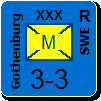ORIGINAL: Shannon V. OKeets
ORIGINAL: dale1066
Just been reading through the naval descriptions and looking at the specs for example max armour thickness some seem to be in metric some imperial and some have both.
To me a trivial thing however others may not think such. Is it a question of what data is avialable, for example I would expect all CW naval descs to be in imperial measures and the rest of the european navies to be metric? what about the US?
Apols if this has been discussed before I did a search for metric and imperial and nothing cropped up
I have standardized on US punctuation for numbers: 12,000 men, 16.2 thickness. But for the metric, I have strongly advised to go with the owning country/country where manufactured, which will make the write ups inconsistent across all unit writeups.
I was unfamiliar with the use of the adjective Imperial for measuring systems. Instead I am use to English versus Metric.
This is one of those "divided by a common language" things. We British reference the Imperial system; you Americans call it the English system.
Mostly, the units are the same, feet, inches, yards and miles are the same in Britain as in the USA; pounds and ounces are the same, but our ton is 2,240 lb, to your 2,000 lb. Of course, the tons ships are measured in are completely different anyway - they're 100 cu. ft. Gross Tonnage is the relevant measure for military ships.
All of the measures of fluid volume, from fluid ounce to pint to gallon are completely different between the two systems.
I think for most purposes, we're unlikely to confuse Imperial and US units when they have the same name. The key exceptions are the ton, where it's important to distinguish short tons from long tons and from metric tonnes when referencing weights (eg of tanks and aeroplanes) and the gallon if anyone does mention fuel consumption or tankage.








